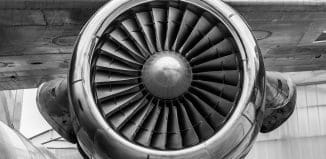The UAV That Chases Hurricane Storms
This post is also available in:  עברית (Hebrew)
עברית (Hebrew)
In recent years we have witnessed UAVs being increasingly operated in more types of missions. Sometimes they replace other platforms, like helicopters, and other times they complement them. Another use scientists have now discovered for unmanned aerial vehicles is improving the weather forecast.
Global Hawk, used by NASA, has recently arrived at the NASA Wallops Flight Facility in Virginia, USA, where it will begin its new mission – improving hurricane forecasts. The SHOUT (Sensing Hazards with Operational Unmanned Technology) program was created for the National Oceanic and Atmospheric Administration (NOAA) and is actually operational technology meant to turn this UAV into a means to monitor weather.
According to Robbie Hood, director of NOAA’s Unmanned Aircraft System Program, “[the program is] flying the Global Hawk above hurricanes and other severe storms to refine it as a new, powerful tool with the potential to contribute to better forecasts of where hurricanes go and how intense they are. The mission is part of NOAA’s work to improve our nation’s preparedness and resilience to hurricanes and other severe storms.”
At the end of September, NOAA and NASA, along with several more partners, will operate the Global Hawk above the Atlantic Ocean in order to collect data on temperature, humidity, and speed and direction of the wind. This data will in put into one of the National Weather Service forecast models used by the National Hurricane Center.
It was also published that the Global Hawk has longer endurance compared to manned pilots and that it provides better resolution and more accurate data. This vehicle is equipped with several useful tools such as dropsondes, a radar that can measure precipitation and wind speed, a microwave sounder that takes vertical profiles of temperature and humidity, and a NASA lightning instrument that measures the electric field of thunderstorms. Scientists are interested in examining whether information from the UAV could replace the data collected by satellites, should one become inoperable.
There’s no end, it seems, to the UAVs capabilities. It could be used for assault, for intelligence, for search and rescue missions and, apparently, for predicting weather. We can’t wait to find out what’s next.





























